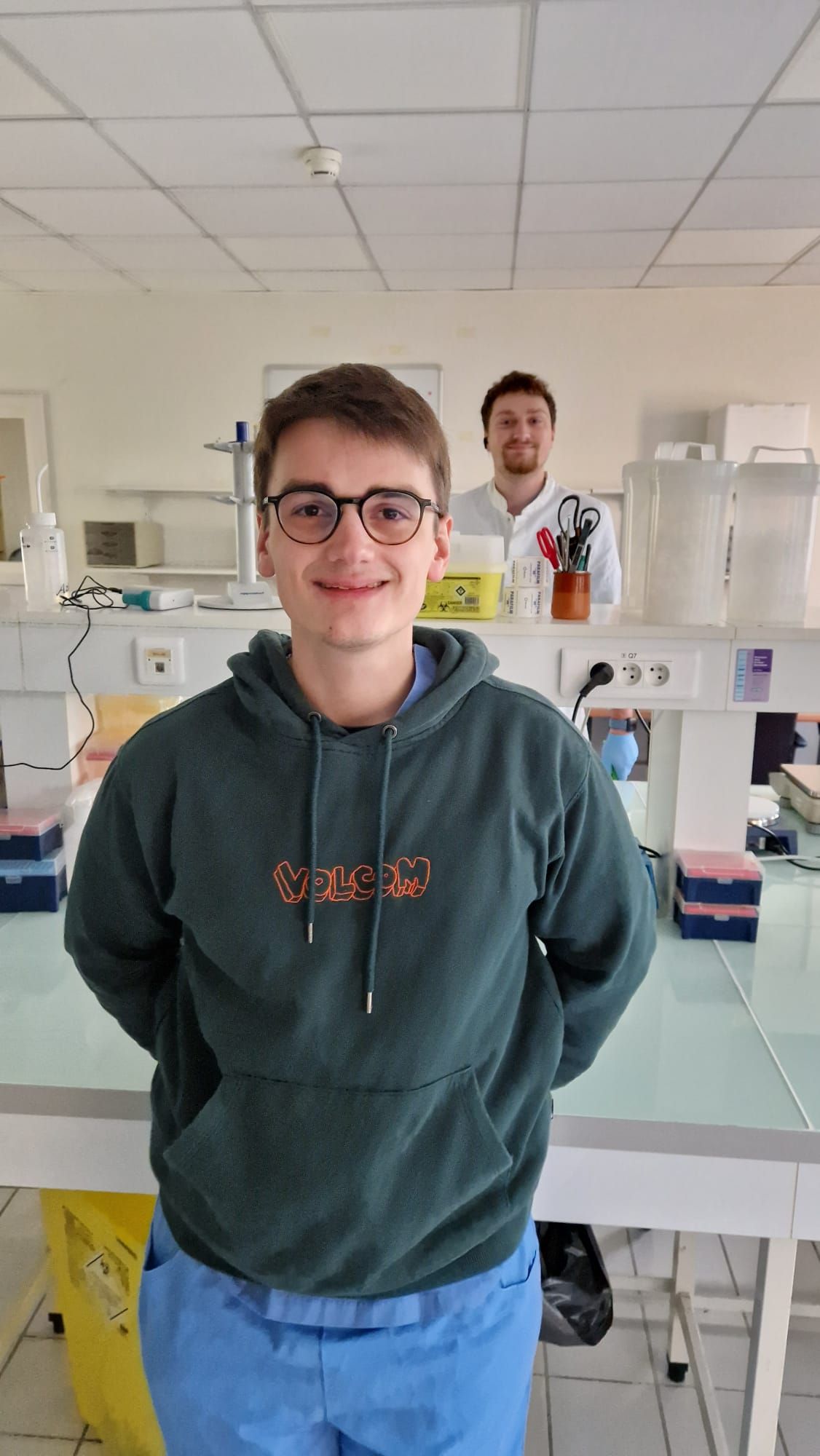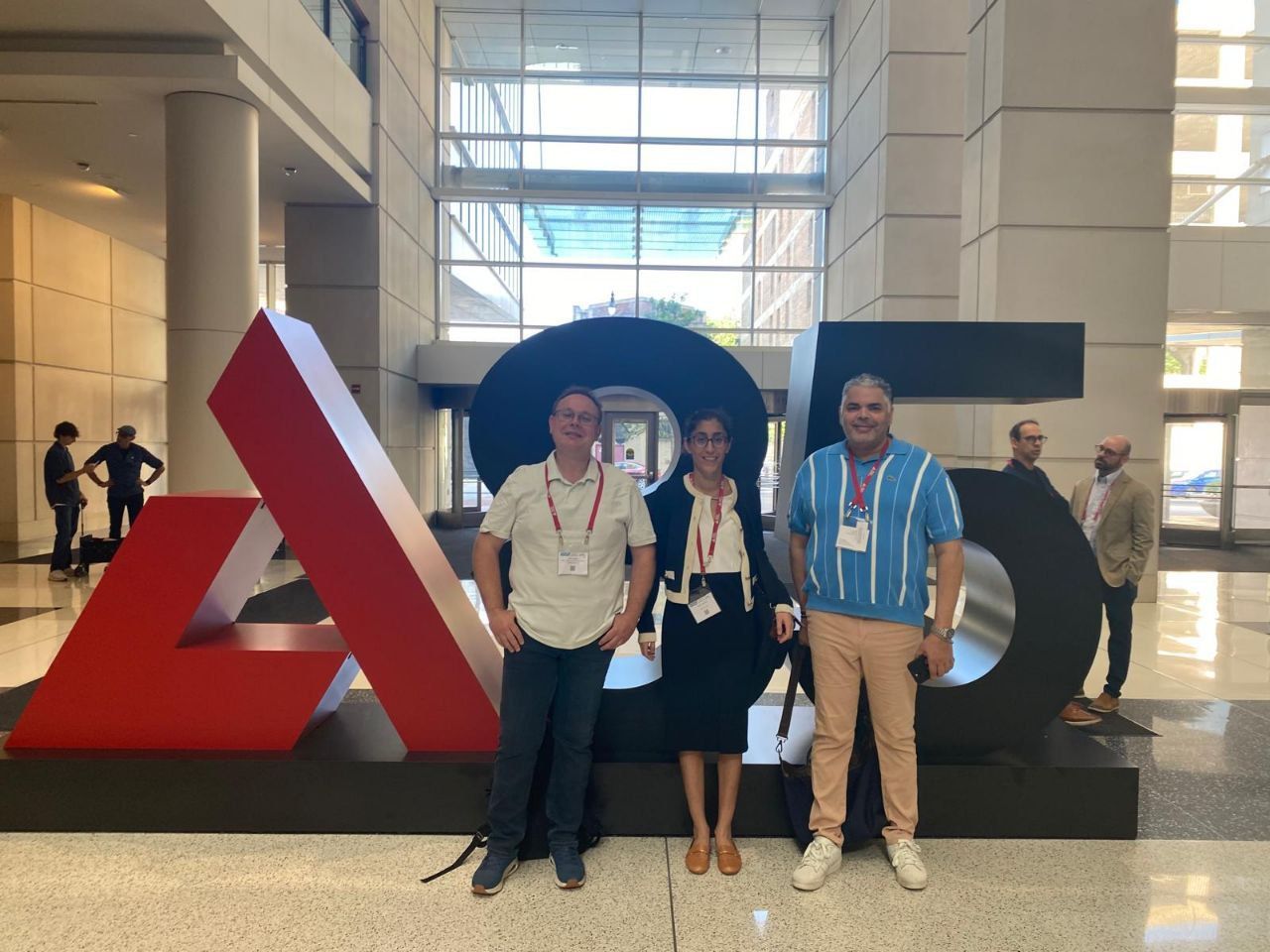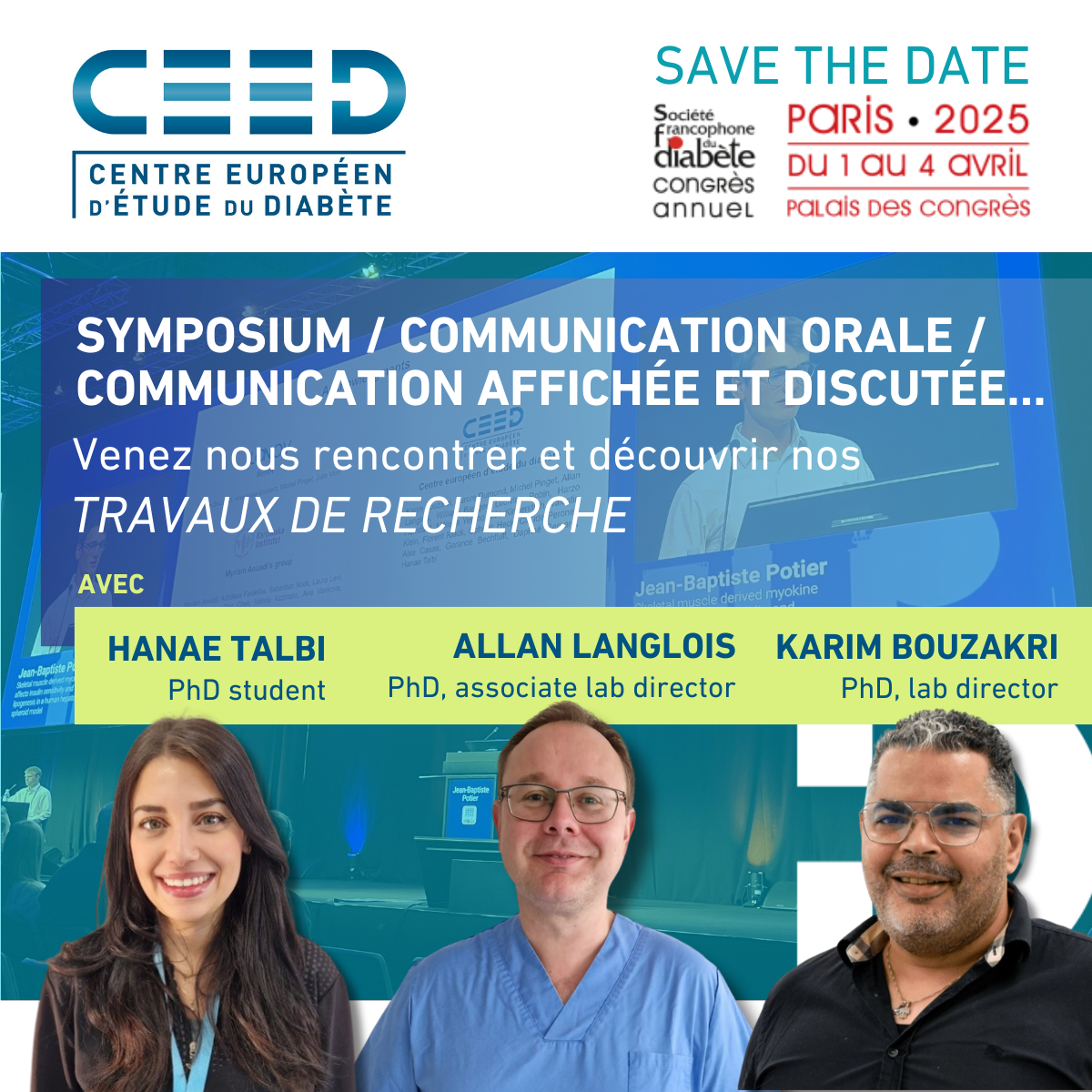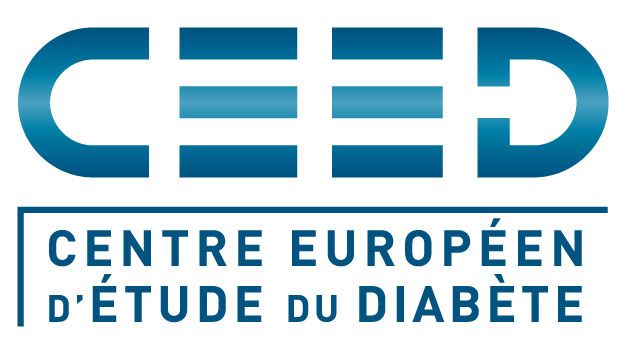EuroDia meeting 2016 - β cell, From Bench to Bedside
November 4, 2016
Organised on the occasion of the 25th birthday of CeeD, the first edition of EuroDia Meeting brought in Strasbourg a panel of experts around pancreatic β cells subject. In the interest of putting the research in a strategy of a concrete application for the patients, the conferences were held in three parts: from fundamental to the clinic without forgetting the preclinical part. This 360° vision provided an overview on the future of type-2 diabetes prevention and treatment, but also an inventory of islet transplantation in type-1 diabetes.
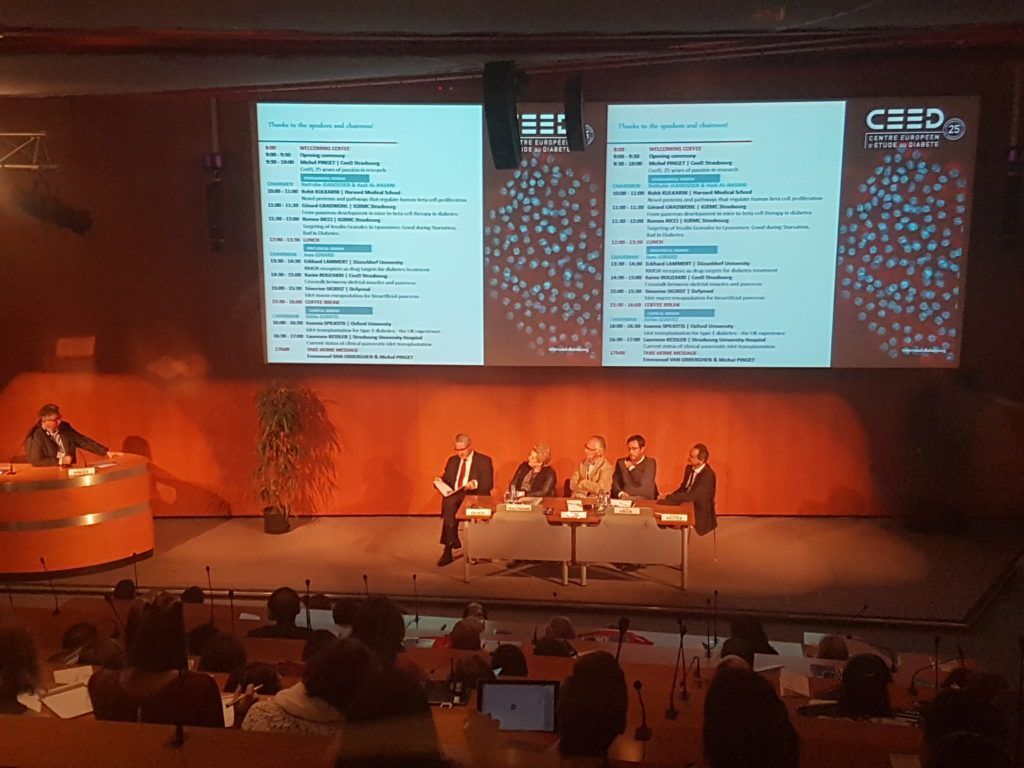
1/ Fundamental approach
Professor at Harvard University (Boston, USA), Rohit N. Kulkarni presented his work on the comprehension of cellular mechanisms that could be responsible of a restoration of β-cells number and so of the glycaemia. It is important to remind that in the diabetic patient, the number of β-cells (insulin secretion cells) highly decreases during the disease. For the first time, thanks to liver-produced growth factors, his team was able to induce the replication of those cells, in the aim to restore insulin production.
Research director at INSERM, working at the Institut de Génétique Biologique Moléculaire et Cellulaires (IGBMC) in Strasbourg, Gérard Gradwohl, also attempts to replace the destroyed β cells during diabetes. For that, with his team, he is dealing with the comprehension of how the pancreatic cell differentiation and maturation is held in the mice during the embryonic stage. The final aim is to transform stem cells into functional β cells to then transplant the patient.
To conclude on this fundamental session, Roméo Ricci, professor at the Medical Faculty of Strasbourg, also officiating at the IGBMC, presented his work not dealing with the cell multiplication but with their protection during the disease. With his team, he discovered that, in an nutrients-rich environment, β cells have a paradoxical tendency to evolve toward autophagy (digestion of the cell by itself). That cellular mechanism occurs generally in a period of food deficiency, however, due to a poorly known specificity of the β cell, the contrary is observed. This reinforces again the negative impact of a rich diet on the evolution of the disease.
2/ Preclinical approach
Professor at the University of Dusseldorf (Germany), Eckhard Lammert is interested in the cellular receptors enabled to increase insulin secretion. For that, he tested with success the effect of a cough medicine, the Dextrometorphan. With his team’s help, he demonstrated that this medicine induces a decrease of glycaemia in type-2 diabetic patients treated with Metformin, and this thanks to the blockade of some receptors.
Karim Bouzakri, research responsible at CeeD, has next presented his work, which objectives are to provide a cellular explanation to the beneficial aspects of physical activity on the disease. He, thus, highlighted that the physical activity of certain muscles has a protective effect on the β cells through myokines, molecules produced by the muscles themselves. It is a real dialogue occurring between the muscles and the pancreas and its comprehension will enable in the next years to rethink the therapies for the diabetic patients, not only through the sport, but also thanks to innovative molecules that could be developed from these myokines.
Β cell transplantation is a real hope for type-1 diabetic patients, but available cells are rare (missing donors). To solve this issue, Séverine Sigrist, research responsible at CeeD and CEO/CSO of Defymed spin-off, manages a very ambitious research program (by CeeD) for the development of a bio-artificial pancreas prototype (MAILPAN), but also for the preparation of its marketing by the realization of preclinical lots for the first tests in human (within Defymed). The cell availability, their long-term viability after transplantation and the rejection’s risk by the receiver are the major challenges to the large-scale development of islet transplantation. With MAILPAN®, the cells are confined in a pocket, which only let the nutrients pass and protects from the rejection of the transplantation. This method enables to avoid the use of immunosuppressive treatments and the devastating adverse effects that they cause.
3/ Clinical approach
Clinical Lecturer at Oxford University (United Kingdom), Ioannis Spiliotis presented the English public health program related to the pancreatic islet transplantation. The major challenge to transplantation is the great inequality between the number of candidates (huge) and the available organs (very rare). The solution found is the establishment of an organ distribution centre, able to choose the best receiver based on their profile. This centre is also responsible for the patients’ follow-up after the surgery and to gather the medical information in order to carry out the most judicious transplantation and, thus, to optimize the chances of success.
The scientific conferences were concluded by the intervention of Laurence Kessler, Professor of the University and doctor at University Hospital of Strasbourg (CHU Strasbourg), who presented the French experience on transplantation and reported the first randomised study comparing transplantation to the other modes of intensified insulin therapy. She emphasizes that the objective is no more the look for an insulin-independence, which needs 3 donors, but to get a glycaemic stabilization, which could be obtained with less transplanted cells, and so less donors. Her position is similar to that of her English colleague. She also highlights the pilot experience carried out by the pneumology and diabetology teams of Strasbourg, on the islet transplantation in subject with mucoviscidosis and benefiting from a lung transplant.
Conclusion
Diabetes is a complex pathology inducing a great number of factors. To treat it, different approaches are needed and some of the most promising ones have been presented during this conference. Might it be the environment, the patient, or also the cells, an efficient solution to the disease should act at all the levels. This meeting has given a global vision, from the fundamental cellular research to the problematics encountered at the patients’ level.
An event labelled by:
Our previous news
